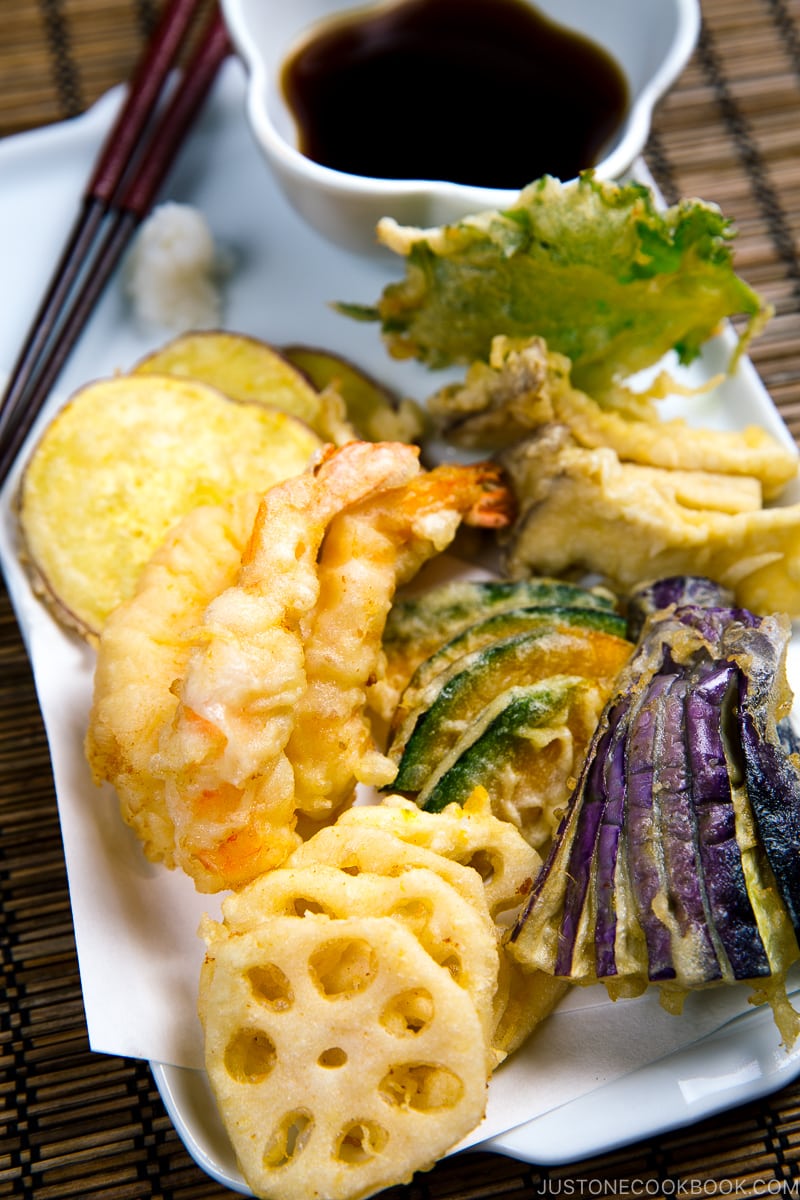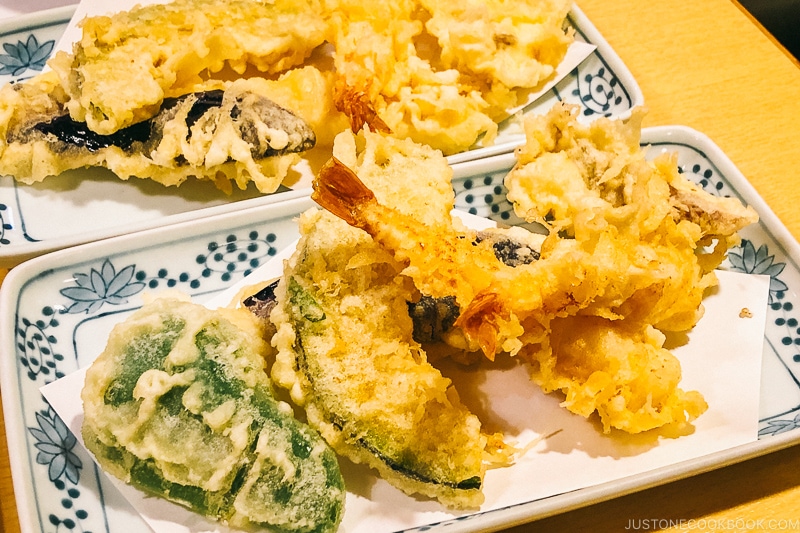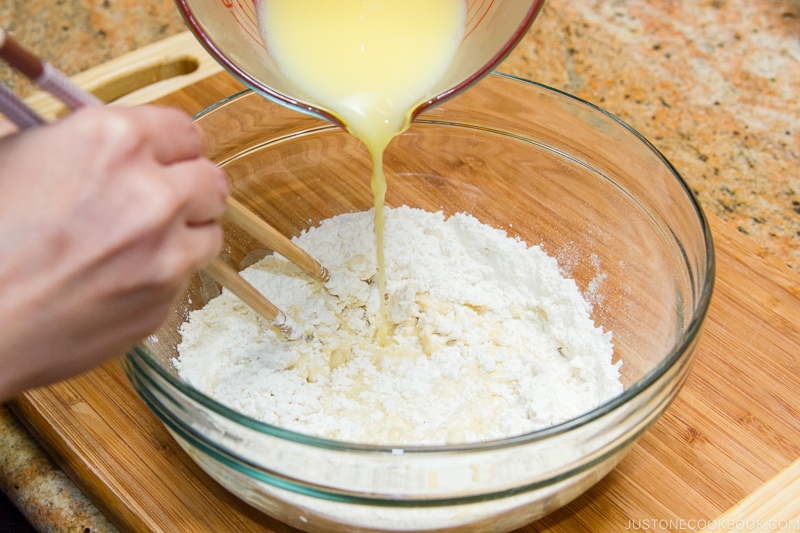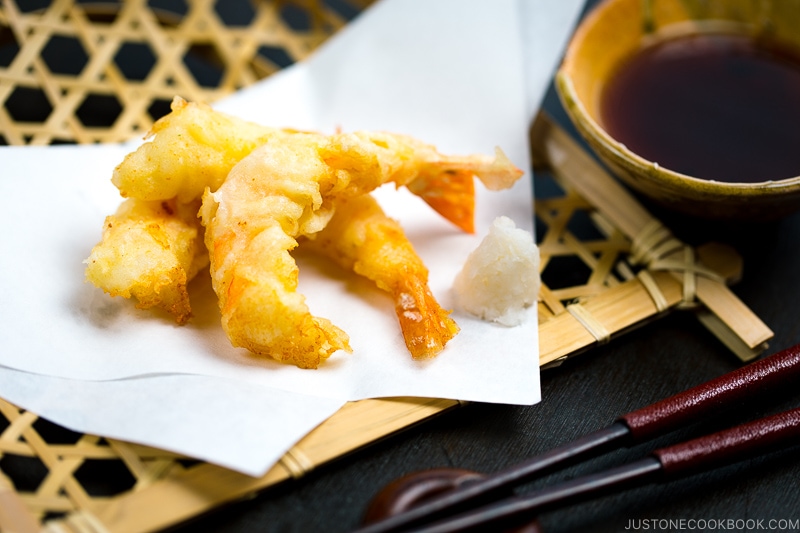Learn how to make perfect tempura at home with this easy-to-follow recipe! You’ll find plenty of helpful tips and tricks for making the crispy batter and delicious dipping sauce. Consider this your ultimate tempura-making guide!

When juicy plump shrimp, thinly sliced Japanese sweet potato, creamy eggplant, and fragrant shiso leaves get dunked in batter and deep-fried to light, irresistible crunch, you know you’re going to have some really good meal.
In Japan, Tempura (天ぷら) is serious stuff. Japanese chefs would spend years mastering the technique of tempura frying. And home cooks will themselves in front of the hot oil in their tiny kitchens. All for the food we so love.
To make tempura worthy of your effort, freshness matters. So do the batter and deep-frying technique. Sure, making perfect tempura requires skills and practice, but I am here to tell you that it is possible to make the perfectly-airy, crispy, and non-greasy tempura right from your home.
Let’s learn all the secrets today!
 History of Tempura
History of Tempura
The tempura-style batter is said to have been brought to Japan by Portuguese missionaries in the 16th century, during the Muromachi period. However, as the cooking method of ‘deep-frying with flour batter’ was already established in Japan beforehand, the origin of tempura can be somewhat disputable.
There are also a number of theories surrounding the etymology of tempura, which adds to the dubiety. Some sources believe the word tempura comes from ‘tempero’, which means ‘seasonings’ or ‘spices’ in Portuguese, while some cited the definition from Kanji (Japanese-Chinese characters).
What’s evident is tempura started to spread as street food and became a favorite among the common people in the early Edo period. With the increase of oil production, food stalls started selling tempura as a skewered snack food, alongside soba, sushi, and eel. By the late Edo and early Meiji era, tempura shops and restaurants emerged and started establishing its position as a specialty cuisine.
Today, you can find some best tempura houses in Japan, where all of your meals will be cooked by a highly trained chef who devotes his entire career to tempura frying.
It cannot be any more true to say that tempura is one of Japan’s representative dishes.
How to Make The Best Tempura Batter 
The success of your tempura is in the batter. To achieve a crispy texture, it’s very important to minimize the gluten formation in the batter as much as possible.
Tempura Batter: (flour : egg + water = 1 : 1 by volume)
- 1 cup (120 g) all-purpose flour (plain flour)
- 1 cold large egg (50 g without shell)
- 200 ml iced water
Helpufl Tips:
- Choice of flour – All-purpose flour is the most basic flour for tempura batter. Some people prefer using low-protein flours, such as cake flour or a mix with corn starch. For convenience, there is also a pre-mix tempura flour available. Personally, I always make my tempura batter from scratch using all-purpose flour, iced water, and egg.
- The recommended flour to water/egg ratio is 1:1.
- A cold batter is absolutely necessary – Make sure all your ingredients (flour, water, egg) and the bowl are cold. Keep your water refrigerated so it’s icy cold. This helps the batter cling on to the surface of the ingredients.
- Do not overmix the batter – Use chopsticks to mix for 15-20 seconds; gluten will start to form when you mix too much. It’s even helpful to leave some floury lumps in the batter. A lumpy batter contains more air and irregularities, which gives the tempura a light lacy layer that we’re after. Aim for consistency – The finished batter shouldn’t be too thin or too thick. I’ll go for a heavy cream consistency.
- Make batter right before you deep fry to reduce gluten activation.
What Ingredients to Use for Tempura
You can basically make tempura with a wide range of fresh ingredients, with the most common options that include seafood, mushrooms, and root vegetables. There are also local tempura menus all over Japan that feature seasonal ingredients unique to the area.
Source: https://www.justonecookbook.com








